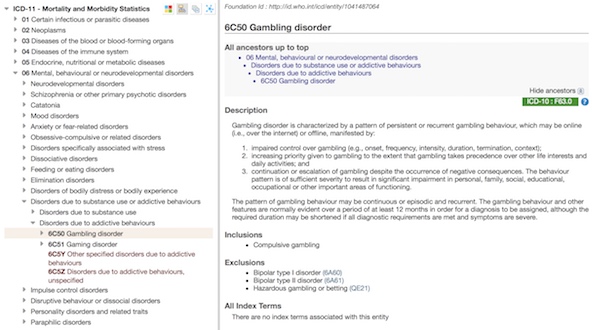When we write about virtual and augmented reality we measure the success of these new technologies either by their market success or the technological level we can achieve with the latest headset. While the market success can be easily measured after the end of every year by the total sales and units sold, the technological advancements are more subjective. Some will talk about the number of pixels, while others highlight their field of view. Then there are refresh rate, latency, eye tracking, brightness, and many other display specific aspects that offer a measure for distinction between the different manufacturers.

Since the market adoption has so far not been overwhelming, many analysts have focussed on the different applications and potential reasons why AR or VR will enhance the particular application. We have discussed several potential applications here in Display Daily, as well, and in most cases the discussion was about whether AR / VR technology would bring unique value to the application in question. Rarely do we discuss why it is not a good idea to use AR / VR in the first place.
What is the appeal of VR /AR and why do we think this is next Big Thing?
As I have discussed before, AR /VR has a Hollywood appeal and has been shown in many movies over the last decade or so. But what looks great on the big screen does not necessarily make a great addition to our real lives. The first and foremost aspect of AR / VR is a more immersive experience that makes any content the viewer watches more “real”. To nobody’s surprise, the first application taking a good look at VR was the gaming industry where a more real experience was considered an easy win for the game developers. I am not debating that there are many applications that can benefit a lot from AR / VR technologies, I am just looking at the potential dark side in this article.
Recently the World Health Organization (WHO) has added ‘Gaming Disorder’ as a ‘disorder due to addictive behaviors’, a position that looks not only at how much a person plays video games but if and how much video gaming interferes with one’s life. The more gaming takes precedence over our lives the more likely a person has developed a gaming disorder.
 WHO listed gaming disorder; credit: WHO
WHO listed gaming disorder; credit: WHO
As no surprise, the Entertainment Software Association (ESA), issued a counterposition that claims that the WHO “…recklessly trivializes real mental health issues like depression and social anxiety disorder…”. A position that did not change the WHO position on this topic. What we may learn from this is that the psychologists of this world are not clear on how video gaming interacts with the mental health of the gamers. This is a position that was explored in “Violent Video Games and Aggression’, an article by Lauren Goldbeck and Alex Pew from the National Center for Health Research, where they show a correlation between playing violent video games and some form of aggressive behavior in real life.
While there are many arguments on both sides of this topic, we should not forget that all these studies were performed by playing games on a standard computer monitor and nobody knows what the result will be if we have people play the same games in the immersive environment of an AR / VR headset. Will that extra ‘realism’ cause more gamers to show real life effects from playing video games?
First, studies seem to support a strong influence of the AR environment on the users. While these studies are not aiming at video games at the moment, they show that users of this technology are more likely to experience such AR environments as a ‘reality’ and make real life decisions accordingly. The latest study “Social Interaction in Augmnented Reality” by Jeremy Bailenson from the University of Stanford shows this very impressively.
The study contains three experiments that have people interact with a person in augmented reality sitting across the room on a chair. While the person is not really in the room the test subjects were asked to complete anagrams in the first experiments. The results showed an effect known in psychology as social inhibition. This means easier tests are completed faster and more difficult ones are completed slower if there is a social interaction present during performing the test. The experiment showed that people reacted the same way even when the social interaction was only perceived through AR. This is a clear indication that users will to a certain extent experience AR interaction the same way as real social interaction.
Stanford AR study, credit: Stanford News
In the second experiment, the participants were asked to move across the room and sit on the same side with the AR avatar. All participants wearing the AR headset chose to sit on the chair next to the Avatar and not on the chair ‘occupied’ by the AR avatar. The majority of participants (72%) who took the AR headset off before choosing the new chair still chose the one next to the avatar, indicating that the AR content still existed in their minds after the headset was taken off.
The third experiment measured the social connection between two people having a conversation, while one is wearing an AR headset. The person wearing the AR headset recorded felling less socially connected to their conversation partner. This indicates that AR distracts users from their normal real life experience.
As they stated in the discussion (Stanford News) of the experiments, these test are just scratching the surface of the social benefits / costs the AR technology as it becomes more mainstream.
All of this is happening at a time where display and software technology enable much more lifelike games. Besides the higher resolution and rendering capabilities, the motion and character expressions are becoming more and more lifelike. If you want to stay with the Hollywood comparison, we are working on achieving a Matrix environment, for sure.
Combining the AR / VR technology with the more lifelike games could create an environment that has serious effects on our psychological as well as social well being. As with most new technologies and advancements these things can be used for good or evil. Do you want to treat psychological disorders or create them, the technology may allow for both. Chose wisely! – (NH)

